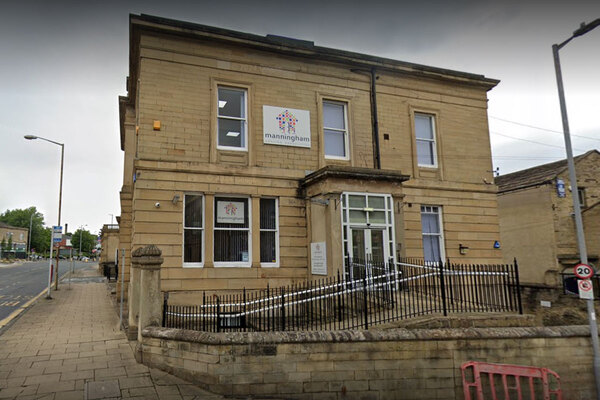Towards efficiency
Landlords need to box clever on digital engagement, says Ian Lever of Alysium Consulting
We have all heard the rhetoric on the benefits of ‘channel shift’ and we started to promote this way back in 2007 in front of an audience that was very closed and could not see how ‘services’ could be shifted to a digital channel.
Since then, the reality has hit. Reduction in rents, the bedroom tax and increased competition means that providers have to reduce costs and become more efficient. The challenge here is not one of available technology - rather it is one of changing processes, changing culture, and doing things differently.
A new wave
Many projects set off with the best intentions but these are often tactical, not strategic, which results in multiple solutions to address the needs of a specific service - in essence building silos. This is one of the areas where businesses simply lose money - multiple mobile solutions, multiple software solutions and multiple social media channels all add to the software ‘sprawl’ and consequently the cost.
We have moved a long way over the past 10 years and channel shift is now well understood (although not everyone has yet bought into it), but we have moved into a new era of ‘digital engagement’. The introduction of artificial intelligence and virtual reality have opened up boundless new opportunities never before encountered.
Digital assistants like Google Home, Apple’s Siri and Amazon Echo provide a means for customers to interact with services without the need for laptops and tablets, removing one of the final barriers to technophobe customers - ironically using technology to do so. Reduction in the cost of internet access, free in many areas, removes yet another barrier.
So let’s stop talking about channel shift and start to exploit the opportunities to be gained from digital engagement. This, coupled with the introduction of ‘bots’ to support your 24/7 digital engagement offering, means you can be always open without the need for human intervention.
But how do you realise the significant savings which are available? It comes down to making hard decisions.
There must be a strategy that every member of staff in the business buys into. Organisations must reduce the number of instances where data is held. Often organisations have a portfolio of ‘best of breed’ solutions, each of which will hold both customer and property data but none of which are aligned as they service silos of operation, not the business.
Customer relationship management was considered to be the solution to this problem but this has been proven to simply add to the software sprawl; integration never goes as deep as promised and savings are simply not achieved. Having an environment of multiple solutions and multiple vendors is a significant barrier to achieving both success and savings.
There will be times when the best single corporate solution may mean compromising on functionality in some service areas, but this is for the greater good. If you hold customer and property data in multiple systems, how can you ever be confident that you can access a single version of the truth? If the business can’t guarantee it, then why would you allow your customers to access the information in the knowledge that it may be out of date or, at worst, totally inaccurate? Remember, General Data Protection Regulation (GDPR) is just around the corner.
However if you can’t find a single solution, the alternative is to find a vendor that has a suite of products with proven integration, and define which system(s) will hold your master datasets. Updates should then be undertaken on the master datasets only and this should feed the other systems in real time. In this way staff and customers can be assured that they are accessing the latest and most accurate data at all times. The reduction in data management overheads associated with independent systems will provide significant savings from day one.
Going paperless
One of the other simple things to address in the drive for efficiency and cost savings is to thoroughly challenge the need for paper outputs. Unless dictated by law, organisations should seek to completely eradicate customer communications using paper. In this day and age there is simply no need for it. Whatever you want to say in a letter can be said in an email, in a message on a portal, in a text, in an instant message, via social media or, if necessary, through a phone call. Paper and posting are simply far too expensive.
Consider this - do you produce a quarterly newsletter? Assuming you do for argument’s sake, do you know how many customers read it when it drops through their letterbox? You may be surprised. Many don’t for the simple reason the newsletter often talks about things that happened in the previous three months so it’s out of date. Where it does talk about the future, customers may have to wait another three months for an update.
Replace this with a weekly online/app-based newsletter which is current, and customer satisfaction will increase while costs will reduce dramatically. OK, not everyone will be able to access it in their home but there are lots of places they can - after all they probably tax and insure their cars online, so if there is a need, customers will find a way.
Having addressed all of our internal issues by reducing software sprawl, revising processes to be ‘digital by default’ and completely removing outbound paper, what else can we do?
Well we need to encourage digital uptake. The ‘build it and they will come’ model simply does not work. You may have to incentivise digital engagement uptake. Many organisations provide incentives for people to become a digital customer. An offer of a free smartphone or tablet during the electronic sign-up process is one example, but other incentives - such as the offer of more repairs appointment slots when booking online, as opposed to those available when calling the contact centre - make the digital experience much richer.
Finally, and this is the hard bit, you need to retire legacy channels. We have spoken about removing paper but there is much more to be done.
Moving rent balance enquiries to digital only is a simple example - available through self-service, an app, text or interactive voice recognition. However to be effective, every member of staff - in particular those in the contact centre - must stop providing the information themselves and direct customers to the digital alternative.
Turning services and channels off is the most challenging part of a digital engagement strategy but without it, the anticipated savings will never be achieved and at worst, cost will increase as you have to support an ever-increasing number of contact channels.
Ian Lever, managing director, Alysium Consulting
This opinion piece was written independently, but first appeared in a chapter sponsored by Aareon








